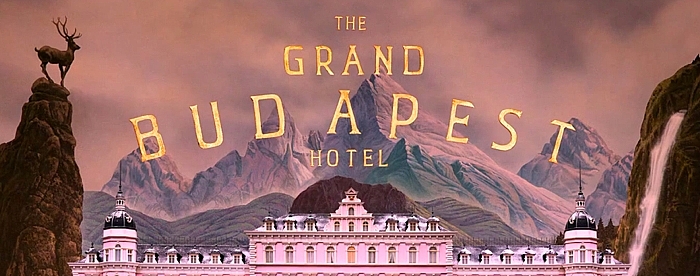The Real Star Of Wes Anderson's "The Grand Budapest Hotel"? Graphic Design
Wes Anderson's latest film, The Grand Budapest Hotel, takes place in an imagined, Eastern European-ish land, called Zubrowka. To bring this fictional world to life, Anderson brought on graphic designer Annie Atkins, who designed more or less every artifact in the movie - newspapers, police reports, passports, you name it - by hand.
Wes Anderson’s latest film, The Grand Budapest Hotel, takes place in an imagined, Eastern European-ish land, called Zubrowka. That posed a design challenge: even a fictional world, if it's to be convincing, needs things like money and government documents. To bring this fake world to life Anderson brought on graphic designer Annie Atkins, who formerly worked as an art director for ad firm McCann Erickson’s Reykjavik, Iceland, office. Atkins designed more or less every artifact in the movie bearing type or lettering – newspapers, police reports, passports, you name it. And she did it all by hand.
To create those, Atkins worked off of reference items that Anderson and production designer Adam Stockhausen collected during months of location scouting. At times, she was doing 20 sketches of a single artifact a day.
As it turned out, the fictional geography was only half the challenge: because The Grand Budapest Hotel takes place in the 1930s, nothing could have an air of newness to it. “I use traditional methods in graphic prop-making wherever possible," she says in an interview with Creative Review. Such as, "a real 1930s typewriter for typewritten documents; dipping a pen in ink for any handwriting. Pieces have to be aged, as nothing should look like it was made in an art department five minutes ago.”
Atkins employed a few tricks, like dipping paper in tea and blow-drying it by hand. Otherwise, she crafted lettering by hand. “The beautiful thing about period filmmaking is that you’re creating graphic design for a time before graphic designers existed, per se,” she says. “It was really the craftsmen who were the designers: the blacksmith designed the lettering in the cast iron gates; the glazier sculpted the lettering in the stained glass; the sign-painter drew the lettering for the shopfronts; the printer chose the type blocks for the stationery.”
Check out the full interview at Creative Review for more fantastic tidbits on Atkins’s work for the movie.
[via Co.Design]